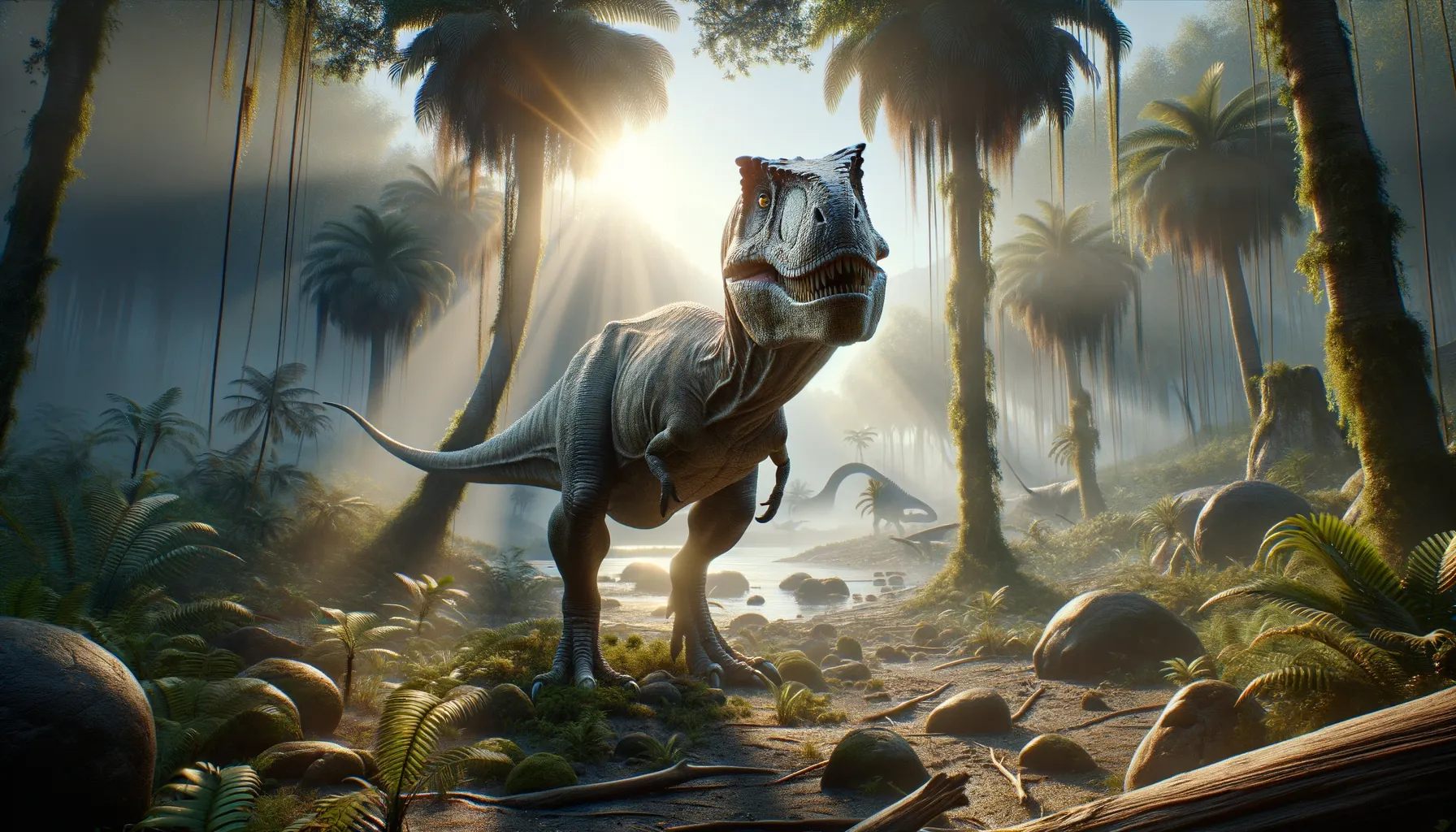
Leshansaurus
A predator of the Jurassic era.
Period
Jurassic
Length
Roughly 7 meters in length.
Height
About 3 meters tall.
Weight
Approximately 1.5 metric tons.
Leshansaurus was a medium-sized theropod dinosaur that roamed the Earth during the Late Jurassic period. Known for its strong hind limbs and carnivorous diet, it inhabited what is now modern-day China. Fossils of Leshansaurus provide valuable insights into the diverse ecosystems of the Mesozoic era and the evolutionary paths of predatory dinosaurs. The Leshansaurus showcases the wondrous diversity of prehistoric life, contributing significantly to our understanding of dinosaur anatomy and behavior.
Diet
Leshansaurus was a carnivore, primarily feeding on smaller dinosaurs and other animals it could overpower. Its sharp teeth and agile body helped it in capturing prey.
Hunting
With its keen hunting instincts, Leshansaurus likely relied on stealth and strategy to ambush prey. It may have hunted alone or in small groups, depending on the availability of prey in its habitat.
Environmental challenges
Leshansaurus faced various challenges like environmental changes that affected food availability. It might have had to compete with other predators for resources. Climatic shifts during its time could have influenced its migratory and hunting patterns, requiring adaptability.
Speed
Moderate, likely adapted for short bursts.
Lifespan
Estimated to be around 20-30 years.
First discovery
First discovered in China, early 21st century.
Fun Facts
- Leshansaurus is a dinosaur that lived during the Late Jurassic period, around 163 to 145 million years ago.
- The name Leshansaurus comes from the city of Leshan in China, where its fossils were first discovered.
- This dinosaur was a carnivore, likely preying on smaller dinosaurs and possibly scavenging like modern-day vultures.
- Leshansaurus is part of the theropod family, a diverse group of bipedal dinosaurs that eventually gave rise to birds.
- Although not as large as some of its theropod relatives, Leshansaurus had strong, sharp teeth and powerful legs for running and hunting.
- Leshansaurus fossils were found in the Sichuan Basin, a region known for its rich deposits of dinosaur fossils.
- Only partial fossils of Leshansaurus have been found, so scientists are still piecing together its full skeletal structure.
Growth and Development
Leshansaurus likely grew rapidly during its juvenile phase, reaching near-adult size within a few years. As it matured, it developed more pronounced features such as stronger jaw muscles and sharper claws. These physiological changes would have played a crucial role in its survival and predation capabilities.
Habitat
Leshansaurus lived in what was once a lush, forested environment interspersed with rivers. This habitat provided ample food sources and cover for ambush hunting. Seasonal changes might have influenced its movements within the region as it followed prey migrations.
Interaction with other species
Leshansaurus likely coexisted with other dinosaur species, competing for food and territory. Its interactions could have ranged from aggressive encounters to avoiding larger predators. Cooperation with its kind might have occurred during hunts or when defending territory against rivals.
Natural lifespan
In its natural setting, it could live up to 20-30 years.
Reproduction
Reproduction was likely similar to other theropods, involving egg-laying after mating rituals. Nests were possibly built in concealed areas to protect eggs from predators, and hatchlings may have required parental care for early growth stages.
Social behaviour
Leshansaurus might have exhibited some form of social behavior, especially during hunts or when raising young. Group dynamics could have involved forming temporary alliances for mutual benefits, though solitary hunting seemed equally plausible in different scenarios.
Fossil locations
Fossils of Leshansaurus have been discovered in parts of China, particularly in the Sichuan province. These findings have been crucial in shedding light on the dinosaur's structure and the ecological niche it occupied. Frequent fossil discoveries in the region suggest it was relatively common in its habitat during its time.
